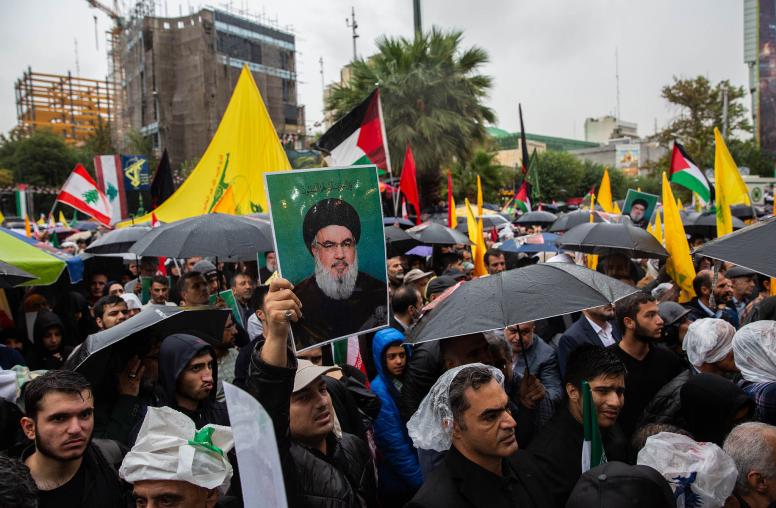The Volatile Factors Underlying a Potential Iran Nuclear Deal
As the clock ticks toward a July 20 deadline for a nuclear deal with Iran, two former U.S. officials, a RAND Corp. analyst and a longtime advocate for eliminating the threat of nuclear weapons examined the volatile issues still to be resolved and the many formulations for potential solutions.

As the clock ticks toward a July 20 deadline for a nuclear deal with Iran, two former U.S. officials, a RAND Corp. analyst and a longtime advocate for eliminating the threat of nuclear weapons examined the volatile issues still to be resolved and the many formulations for potential solutions.
The May 13 discussion at USIP focused on negotiations that the U.S. compares to solving a Rubik’s Cube™, because so many pieces are involved, and moving one affects the arrangement of the others. The six key issues corresponding to the cube’s six sides are enrichment, plutonium, transparency and inspections, weaponization, sanctions and timelines, former Deputy Assistant Secretary of Defense Colin Kahl said during the panel discussion.
The event was part of a series of three being hosted by a coalition of USIP seven other Washington organizations to coincide with the last three rounds of talks between Iran and the so-called P5+1 countries – Britain, China, France, Germany, Russia and the United States.
In addition to Kahl, who directs the Middle East Security Program at the Center for a New American Security, the speakers at the first event were Robert Einhorn, a senior fellow at the Brookings Institution who served as an arms control official in the Clinton and Obama administrations; Alireza Nader, a senior international policy analyst at RAND and author of Iran After the Bomb; ; and Joseph Cirincione, president of the Ploughshares Fund and longtime advocate for eliminating the threat of nuclear weapons.
Here are the key takeaways from their remarks:
Robert Einhorn
- A final deal is possible, but very hard to get by the July 20 deadline.
- A key requirement for a deal is implementing a monitoring mechanism that can quickly detect any breakout steps towards a bomb.
- Iran wants to expand its uranium enrichment capabilities while the P5+1 wants to limit them.
- Iran could produce enough uranium to fuel a weapon in two months. Breakout time needs to be lengthened.
- Iran needs to understand that it will pay a heavy price if it violates a deal by moving to produce a bomb.
- The U.S. will probably have to demonstrate its Persian Gulf allies and Israel that it is still resolutely committed to their security.
Alireza Nader
- Mutual trust is not a requirement for a successful deal. Stringent inspections and firm commitments to sanctions relief can make up for the trust gap.
- So far, Supreme Leader Ayatollah Ali Khamenei has supported negotiations and given President Hassan Rouhani considerable space to maneuver. Both are interested in lifting sanctions.
- Both Iran and the U.S. have vested interests in resolving the nuclear dispute.
- Sanctions aren’t necessarily empowering Iran’s government and hurting the population, as some critics say. The situation is actually more complicated. The government is running out of money and some people are making money off sanctions.
- The U.S. could still have lots of problems with the Islamic Republic even after a deal.
- Iranian hardliners have accused their negotiators of selling the country’s nuclear rights. Ultra-conservatives fear a nuclear deal because they think it will open Iran to more Western influence, especially culturally.
- President Hassan Rouhani wants a better relationship with the U.S. but many Iranians are not ready. Building trust will be a decades-long process.
Joe Cirincione
- Every aspect of the talks is difficult, but we have never been closer to an agreement.
- The nuclear deal is step No. 1. Afterwards, Washington and Tehran could cooperate on shared concerns in Iraq, Afghanistan, Syria and elsewhere.
- This deal is not about trust. This is a contract.
- Iran needs a face-saving way to frame the deal because it has invested so much in its nuclear program. A deal would need to assure Iran that sanctions will really be lifted.
- Politically and logistically, imposing sanctions is much easier than lifting them. So the deal will likely be an action for action arrangement.
- Iran’s ballistic missiles are not the list of items to negotiate. Adding too many items to the list might overload the cart.
Colin Kahl
- The two sides differ on the preferred length of the agreement. The U.S. and others are pushing for decades, while Iran is pressing for a few years.
- Iran’s enrichment capability will likely need to be capped at 5 percent, the level suitable for civilian nuclear power. Weapons grade is 90 percent.
- A nuclear deal must be politically feasible in both the U.S. and Iran.
- Tehran will need to account for a possible military dimension of its program and what experiments it conducted.
- The concern about the heavy water reactor at Arak is that it could produce one to two bombs worth of plutonium a year if completed.
- Iran needs about one year to construct a crude nuclear device and then a few more years to fit it onto a ballistic missile.
Garrett Nada is a senior program assistant for Iran and Middle East programs at USIP.



